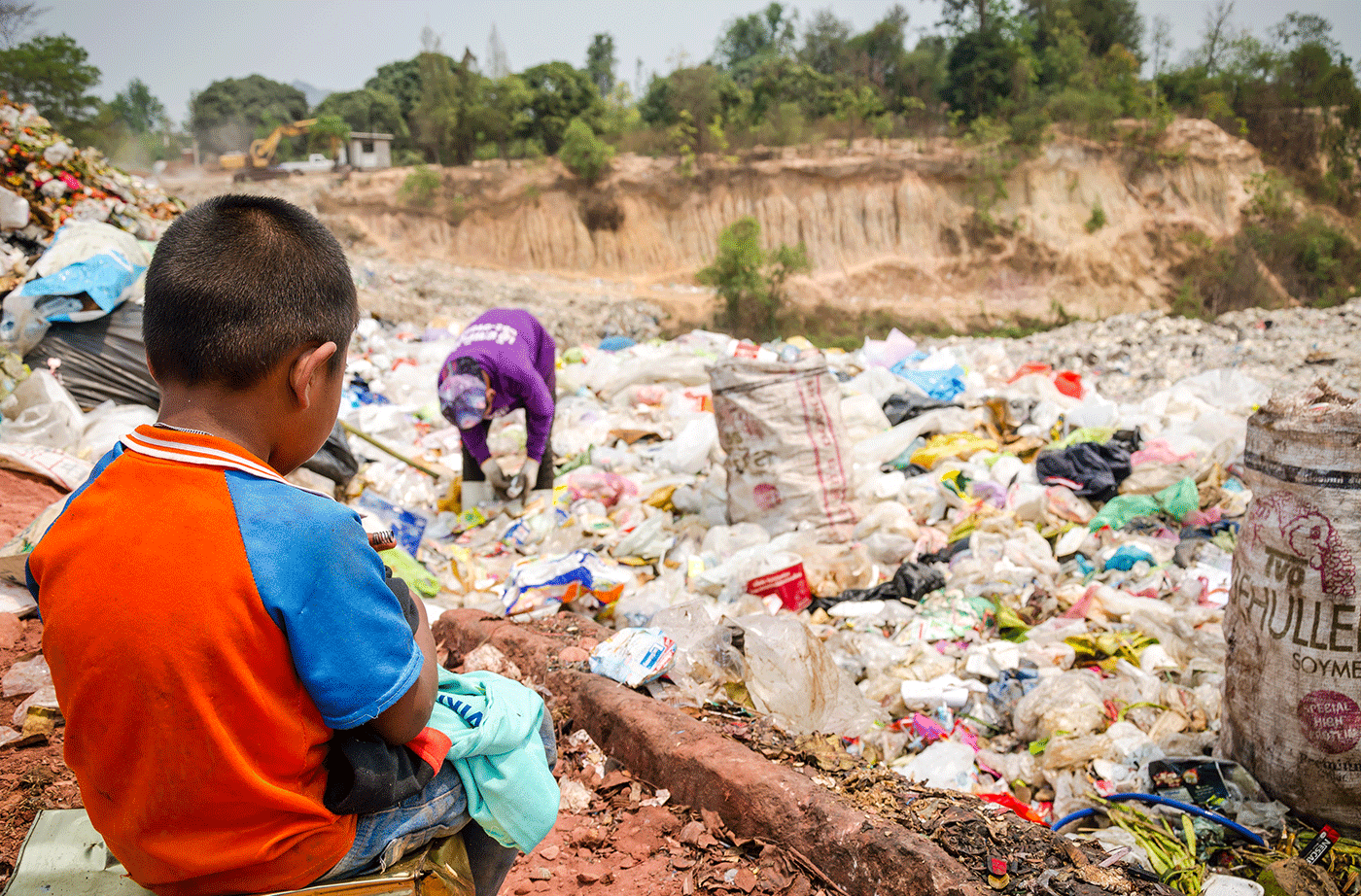There is more to our waste crisis than meets the eye as a new United Nations (UN) report makes clear. The study, released by the United Nations Environment Program and the environmental justice nonprofit Azul shows that at every stage of the life-cycle for plastics – from production to disposal — there are significant human health impacts that disproportionately affect economically and socially disadvantaged people. And this injustice is not unique to plastics.
For years I have explained to people that when we throw something “away,” we not only waste the material itself, but we toss out all the embodied energy and water that went into making that material along with it. Amplifying the problem in this way usually inspires action. I’ve used a similar tactic to get my finicky kids to eat the food I have prepared, except I usually add that in addition to wasting the food they are wasting Mommy’s time and money, too (and it works, most of the time).
But, the UN report as well as other recent reports and news stories have helped me realize that I have neglected to include this very important part of the waste story in my well-intentioned guilt trips: the health impacts of waste. We all bear some, but there are people who suffer a disproportionate health burden from the pollution created by making and disposing of waste. These communities are typically low-income or minority communities that are located downwind or downstream to plastics manufacturers, industrial farms, landfills, incinerators, or other polluting facilities. It is an undeniable, well-documented environmental justice issue around the world and here in the U.S. Here are just a few examples:
- This study shows that the air pollution created by consumption of goods and services mainly by the non-Hispanic white majority is disproportionately inhaled by Black and Hispanic minorities.
- A report by the Center for International Environmental Law describes how the production of virgin plastic pollutes the surrounding communities with toxic chemicals that lead to health problems, including cardiovascular and respiratory disease and cancer.
- New Jersey just passed the most meaningful environmental justice law in the country, because they know that most of the environmental and health stressors created by polluting facilities fall upon lower-income or minority populations.
- A recent New York Times story highlighted how the U.S. continues to ship its plastic waste overseas, often to poorer countries.
- This fascinating, seven-minute TED talk describes how the wind plays a role in the location of marginalized communities.

Our overconsumption of stuff—which includes a lot of packaging and plastic—is also a significant contributor to global climate change, which, again, disproportionately impacts the health of poorer communities around the world.
- It’s estimated that greenhouse gas emissions from the full life-cycle material management activities account for 55-65 percent of greenhouse gas emissions in more developed countries.¹
- The production and incineration of plastic alone produces more than 850 million metric tons of greenhouse gases—equal to the emissions from 189 five-hundred megawatt coal power plants.²
- The World Health Organization states that between 2030 and 2050, climate change is expected to cause approximately 250,000 additional deaths per year, from malnutrition, malaria, diarrhea, and heat stress alone, primarily in developing countries.
Now, you will hear me say that when we waste materials, we are wasting the embodied, and future, health impacts in addition to the environmental resources. Recognizing the environmental injustice of our waste system further increases my drive to pass better policies, and I hope it does the same for others, too.
Recognizing the unjust health impacts of waste is particularly upsetting because there is so much waste that we could avoid, particularly from single-use plastic packaging. Of the 380 million tons of plastic produced each year, 40 percent is used for packaging. And we do a bad job at cleaning up that mess. Only 9 percent of the plastic ever made was recycled, 12 percent was destroyed through incineration, and 79 percent is either in our landfills or polluting our oceans.³ It’s estimated that there are 150 million metric tons of plastic in the marine environment already, and every year we add about 8 million more.
And ICYMI, the plastics industry is the fossil fuel industry. As we move toward a renewable energy future, these companies are doubling down on plastics, thereby making a very shortsighted pivot from one unsustainable business model to another and poisoning people in the process. While the world is transitioning to a more sustainable, greener economy, these folks will find themselves on the wrong side of history—and we cannot let them bring us with down with them.
There’s a better way to co-exist on this planet, but that will not happen without policy change. For starters this means we need policies that protect marginalized communities from undue environmental burdens of waste. We need to break free from plastic. We need policies designed to reduce, reuse, and recycle packaging waste and prevent it from entering the oceans, and sister policies that normalize refillable packaging and reusable food ware—for everyone. In short, we need a more sustainable and equitable waste management system that prioritizes health and resource conservation over perceived convenience and corporate polluters. Lives depend on it.
—Sarah Nichols, NRCM Sustainable Maine Director
1 Source: Organisation for Economic Co-operation and Development: https://www.oecd.org/env/waste/ghg-materialsmanagement.htm
2 Source: Center for International Law: https://www.ciel.org/plasticandclimate/
3 Source study: Production, use, and fate of all plastics ever made: https://advances.sciencemag.org/content/3/7/e1700782/tab-pdf










Leave a Reply